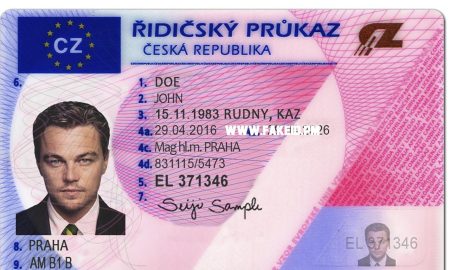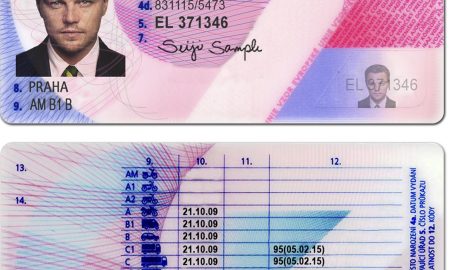Maryland Scannable Fake Id Front And Back
2023-07-22 2023-07-22 1:06Maryland Scannable Fake Id Front And Back

Maryland Scannable Fake Id Front And Back
Czech Fake Driver License
Dnr Fake Driver License
Italy Fake Passport
Swedish Fake Passport
Title: Maryland Scannable Fake ID: Examining the Consequences and Ensuring Authenticity
Introduction (100 words):
In today’s digital age, the availability and production of fake identification cards have become alarmingly prevalent. One particular state that has witnessed an increase in this illicit activity is Maryland. Counterfeiters have developed sophisticated techniques to replicate the front and back of Maryland scannable fake IDs, bringing forth significant concerns regarding national security, public safety, and identity fraud. Consequently, it is crucial to delve into the consequences associated with these fraudulent IDs while exploring measures to authenticate genuine identification documents.
Section 1: The Prevalence and Growth of Maryland Scannable Fake IDs (350 words)
The use of fake IDs in Maryland, predictably among underage individuals, has been an ongoing issue for years. With countless scenarios involving fake IDs being used to purchase alcohol, gain entry to restricted venues, or engage in other age-restricted activities, the need to curb this trend is increasingly paramount. The availability of advanced technology has enabled counterfeiters to produce scannable fake IDs that mimic the front and back of genuine Maryland identification cards, posing significant challenges for law enforcement agencies. With the rise of online black markets and underground networks, the growth of fake ID production in Maryland has reached unprecedented levels, warranting immediate attention.
Section 2: Consequences of Maryland Scannable Fake ID Usage (450 words)
The consequences associated with the use of fake IDs in Maryland extend beyond mere underage drinking or restricted venue entry. The impact on public safety, national security, and individuals’ lives cannot be understated. Firstly, the use of fraudulent identification increases the risk of facilitating illegal activities such as human trafficking, drug smuggling, or terrorism. Criminal organizations often exploit these fake IDs to establish false identities and carry out illicit operations unnoticed. Additionally, these counterfeit documents pose challenges for law enforcement agencies attempting to maintain accurate records and databases, hindering their ability to track criminals effectively.
Furthermore, the use of fake IDs places innocent individuals at risk of identity theft and financial fraud. By assuming someone else’s identity through a counterfeit ID, malicious actors can tarnish the victim’s reputation, compromise their personal information, and potentially cause significant financial harm. These consequences can take years to rectify, resulting in immense stress and inconvenience for the victims.
Section 3: Combating Maryland Scannable Fake IDs (500 words)
Given the serious implications and consequences associated with the use of fake IDs, it is imperative for government agencies, businesses, educational institutions, and the general public to take proactive measures to combat this issue effectively. Efforts should primarily focus on authentication processes and enhanced technology to validate identification cards.
One key approach is to invest in modern scanning devices capable of scrutinizing not only the physical aspects but also the digital and biometric features of Maryland identification cards. This would help differentiate genuine IDs from counterfeits, making it easier for businesses, law enforcement agencies, and educational institutions to validate individuals’ identity. Collaborative efforts between these entities should be encouraged to share information about fraudulent IDs, replicate newer counterfeit findings, and ensure consistent monitoring of emerging trends.
Furthermore, public awareness campaigns should be instigated to educate citizens about the harmful consequences associated with using counterfeit IDs and the importance of verifying identification documents. By fostering a greater understanding of the risks and implications, individuals can be more cautious and responsible when presented with suspicious identification cards.
Section 4: The Need for Stricter Penalties and Enforcement (300 words)
To effectively deter individuals from using fake IDs, the legal system must institute stricter penalties and enforcement measures targeting both the users and producers of counterfeit identification documents. Law enforcement agencies need the authority and resources to actively investigate and prosecute individuals involved in the trade of fake IDs. The confiscation and destruction of all counterfeit documents should become routine practice to reduce the availability of these fraudulent items.
Legislators should review existing laws and regulations related to fake IDs to ensure they remain current and effective in addressing the evolving methods of counterfeiters. Furthermore, businesses, especially those involved in age-restricted industries, should receive support to enhance their capabilities in detecting fraudulent IDs and reporting any suspicious activities promptly.
Conclusion (150 words)
The prevalence of Maryland scannable fake IDs and their associated consequences necessitate a comprehensive and collaborative approach to combat this issue effectively. By investing in advanced authentication technology, raising public awareness, implementing stricter penalties, and enforcing regulations, it is possible to curtail the growth of fake IDs and mitigate risks to public safety and national security. It is crucial for individuals, institutions, and government agencies to work together in safeguarding the integrity of Maryland’s identification processes, ensuring only genuine and lawfully obtained IDs are recognized.















